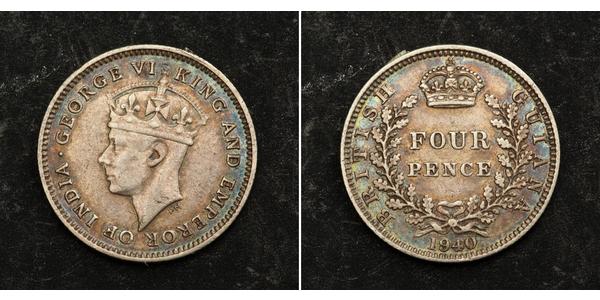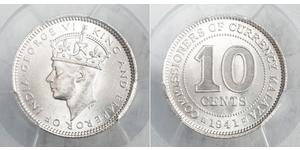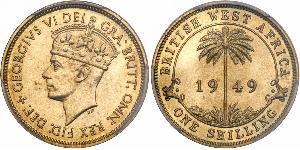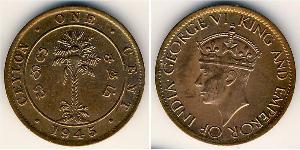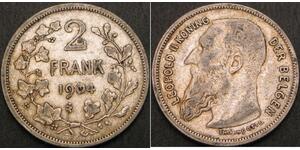(sold for $15.0)
1940, British Guiana/West Indies, George VI. Nice Silver 4 Pence Coin. XF!
Mint Year: 1940 Reference: KM-30. Denomination: 4 Pence Condition: Toned, ohterwise XF! Material: Sterling Silver (.925) Diameter: 16mm Weight: 1.87gm
Obverse: Crowned bust of Georg VI left. Legend: GEORGE VI - KING AND EMPEROR OF INDIA .
Reverse: Crown above value (FOUR PENCE) within wreath. Date (1840) below. Legend: BRITISH GUIANA AND WEST INDIES / 1940
British Guiana (also spelled Guyana) was the name of the British colony on the northern coast of South America, since 1966 known as the independent nation of Guyana. Its indigenous people are the Arawak-speaking Lucayan, part of the Taino people. The first European to discover Guiana was Sir Walter Raleigh, an English explorer. The Dutch were the first Europeans to settle there, starting in the early 17th century, when they founded the colonies of Essequibo and Berbice, adding Demerara in the mid-18th century. In 1796, Great Britain took over these three colonies during hostilities with the French, who had occupied the Netherlands. Britain returned control to the Batavian Republic in 1802, but captured the colonies a year later during the Napoleonic Wars. The colonies were officially ceded to the United Kingdom in 1814, and consolidated into a single colony in 1831. The colony's capital was at Georgetown (known as Stabroek prior to 1812). As the British developed the colony for sugarcane plantations, they imported many Africans as slave labour. The economy became more diversified since the late 19th century, but has relied on resource exploitation. Guyana became independent of the United Kingdom on 26 May 1966.
em>. Bid with Confidence!
George VI (Albert Frederick Arthur George; 14 December 1895 – 6 February 1952) was King of the United Kingdom and the Dominions of the British Commonwealth from 11 December 1936 until his death. He was the last Emperor of India and the first Head of the Commonwealth.
As the second son of King George V, he was not expected to inherit the throne and spent his early life in the shadow of his elder brother, Edward. He served in the Royal Navy and Royal Air Force during the First World War, and after it took on the usual round of public engagements. He married Lady Elizabeth Bowes-Lyon in 1923 and they had two daughters, Elizabeth and Margaret.
George's elder brother ascended the throne as Edward VIII upon the death of their father in 1936. However, later that year Edward revealed his desire to marry the divorced American socialite Wallis Simpson. British Prime Minister Stanley Baldwin advised Edward that for political and religious reasons he could not marry a divorced woman and remain king. Edward abdicated in order to marry, and George ascended the throne as the third monarch of the House of Windsor.
During George's reign the break-up of the British Empire and its transition into the Commonwealth of Nations accelerated. The parliament of the Irish Free State removed direct mention of the monarch from the country's constitution on the day of his accession. Within three years, the Empire and Commonwealth, except the Irish Free State, was at war with Nazi Germany. In the next two years, war with Italy and Japan followed. Though Britain and its allies were ultimately victorious, the United States and the Soviet Union rose as pre-eminent world powers and the British Empire declined. After the independence of India and Pakistan in 1947, George remained as king of both countries, but the title Emperor of India was abandoned in June 1948. Ireland formally declared itself a republic and left the Commonwealth in 1949, and India became a republic within the Commonwealth the following year. George adopted the new title of Head of the Commonwealth. He was beset by health problems in the later years of his reign. His elder daughter, Elizabeth, succeeded him.

|
Posted by:
anonymous 2017-09-28 |
2 Franc Belgium Silver Leopold II of Belgium(1835 - 1909)
group has 7 coins / 7 prices
⇑

